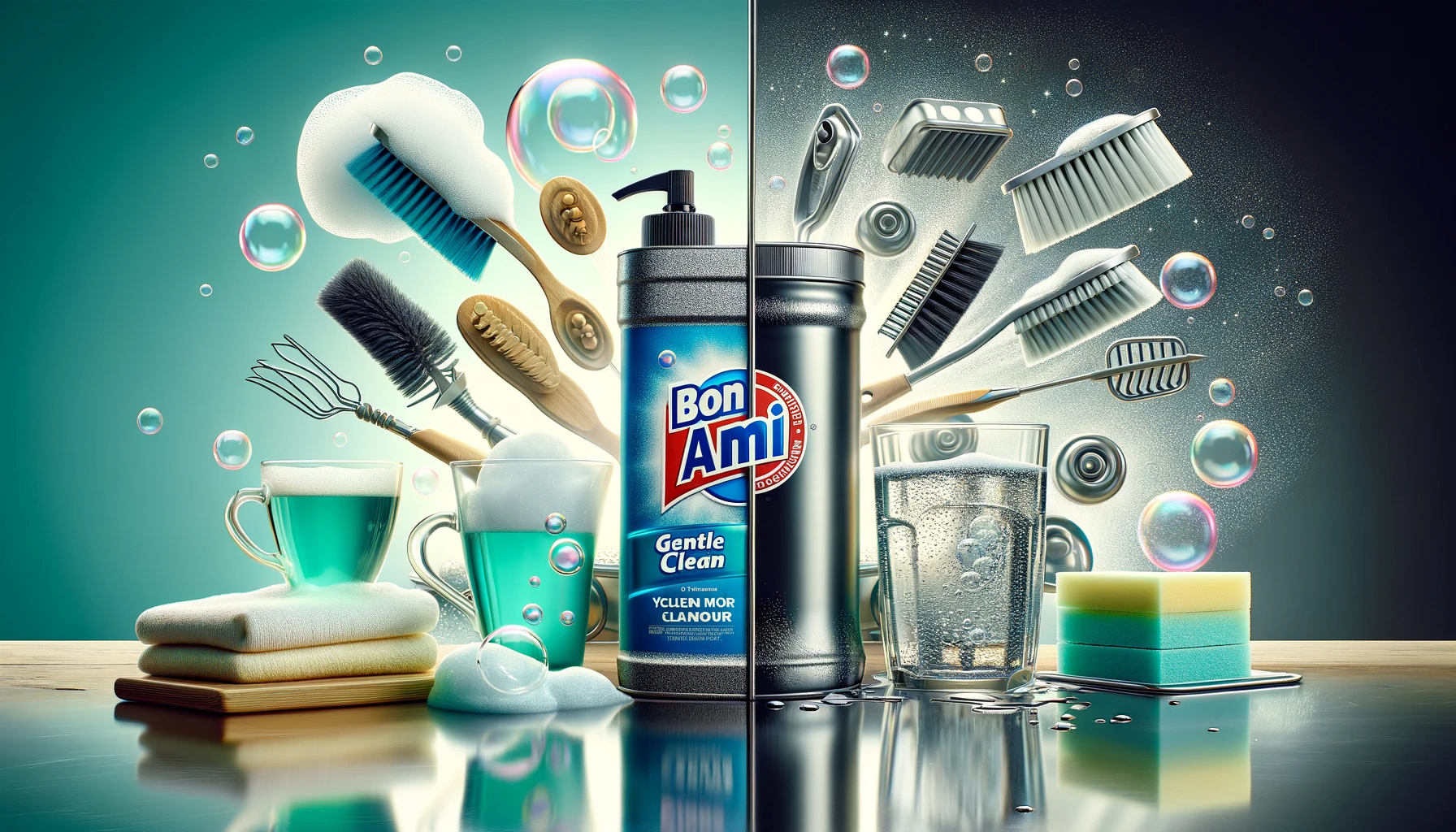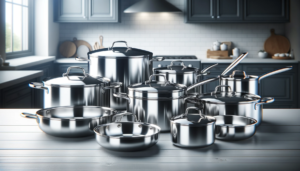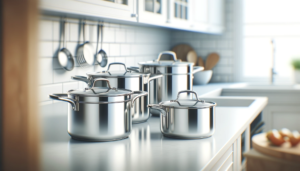Can you use bleach on stainless steel cookware? No, bleach can corrode and damage stainless steel over time.
A gentler, safer alternative powder cleanser is needed.
Bon Ami and Bar Keepers Friend are two of the most popular powder cleansers, but they have key differences in ingredients and cleaning capabilities.
Let’s dive into comparing these two cleansers so you can decide which is best for your cleaning needs.
Bon Ami vs. Bar Keepers Friend: What’s the Difference?
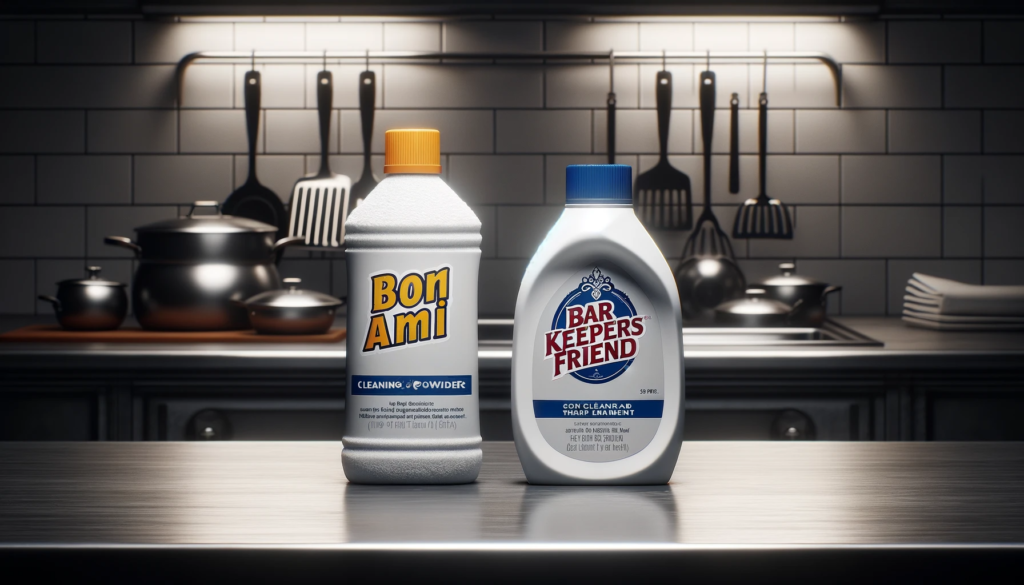
The key difference between Bon Ami and Bar Keepers Friend lies in their ingredients.
Bon Ami contains feldspar, soap, and other mild abrasives for gentle scrubbing power.
Bar Keepers Friend includes oxalic acid plus scrubbing particles, giving it stronger cleaning capabilities against heavy stains and buildup.
However, oxalic acid can damage some surfaces with repeated use.
Ultimately, Bon Ami is the gentler option safe for more materials, while Bar Keepers Friend offers superior stain-fighting properties but carries higher risks of etching surfaces over time.
We will analyze these cleansers’ ingredients, cleaning uses, effects on materials, and costs in detail within this guide.
What is Bon Ami?

Bon Ami is a household cleaning powder that has been around since 1886.
It was originally made in Europe but production moved to the United States in the 1880s.
The Bon Ami Company was founded in New York and marketed it as a cleaner that was made with ingredients safe for the entire family.
The active ingredients in Bon Ami are feldspar, soap, water, and other very mild abrasives.
It does not contain harsh bleaches or chemicals that could damage surfaces.
Instead, Bon Ami relies on the natural scrubbing power of the feldspar and detergent to lift dirt and stains without scratching.
This makes it gentle enough to use on a variety of materials around the kitchen and bathroom.
Over the years, Bon Ami established a reputation for being an effective cleanser that was also harmless for even the most delicate items.
Many people appreciate that Bon Ami does not contain dangerous chemicals, especially since it may be used to clean cookware and surfaces that come in contact with food.
It presents very little risk of leaving any chemical residue behind.
What is Bar Keepers Friend?

Bar Keepers Friend is another popular cleaning powder on the market.
It was launched in the 1880s by a company in Indianapolis that made commercial bar soap for cleaning beer and liquor bottles.
Bar Keepers Friend was initially marketed toward the restaurant and bar industry before entering the retail consumer market.
The active ingredients in Bar Keepers Friend are oxalic acid, feldspar, and detergents.
The abrasive minerals and degreasing agents give Bar Keepers Friend excellent cleaning power against stubborn gunk like mineral deposits, rust stains, and baked-on grease.
It is especially effective for cleaning ovens, grill grates, porcelain sinks, and hard water stains and rings on glass.
However, Bar Keepers Friend also contains oxalic acid, which is a harsher chemical and active ingredient than Bon Ami.
Oxalic acid is an effective rust remover and cleaning agent but can damage some surfaces if used improperly over time.
Nonetheless, many people rely on Bar Keepers Friend when they need heavy duty cleaning power against very stubborn stains.
Ingredient Differences
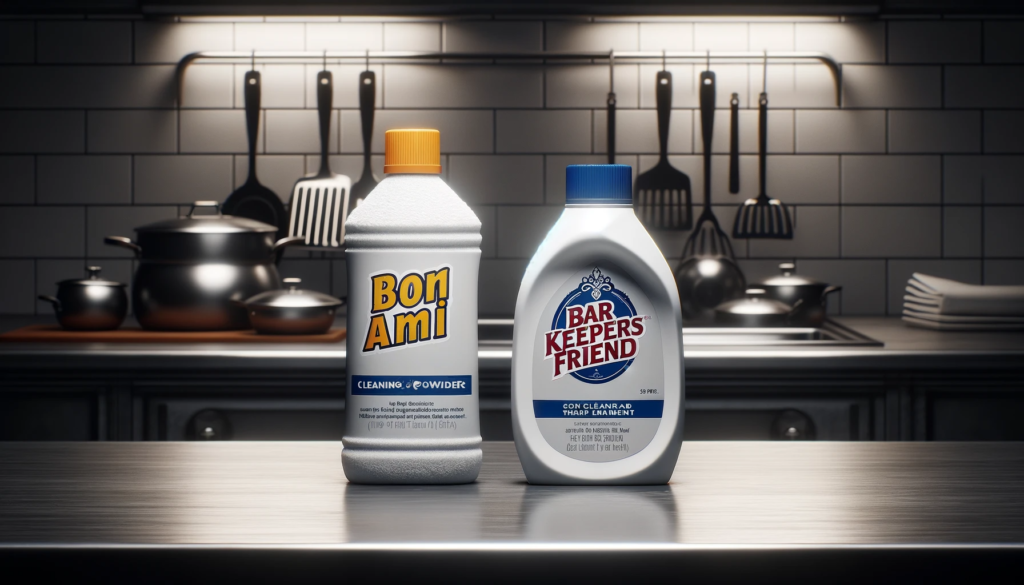
The key difference between the ingredients in Bon Ami versus Bar Keepers Friend lies in the oxalic acid contained in Bar Keepers Friend.
Oxalic acid is a strong organic acid used to dissolve rust stains, clean minerals, and cut through all sorts of difficult baked-on gunk.
This gives Bar Keepers Friend more cleaning power.
Bon Ami does not contain any oxalic acid or other harsh chemicals.
Instead, Bon Ami relies on ingredients like feldspar, talc, and detergents to scrub surfaces clean.
These minerals provide abrasion to lift dirt while the detergents pull grease and stains away as well.
However, Bon Ami does not have the stain-removing punch of oxalic acid that allows Bar Keepers Friend to wipe out more stubborn messes.
Both cleaners do contain abrasives like feldspar, but Bon Ami has more gentle scrubbing grains that are less likely to damage surfaces.
Bar Keepers Friend combines its oxalic acid with slightly coarser minerals that further enhance its cleaning power.
So Bar Keepers Friend will be more effective at removing things like baked-on food, rust stains, mineral deposits, and burnt grease from pots and pans.
Cleaning Effectiveness
The oxalic acid in Bar Keepers Friend also makes it better at tackling more stubborn caked-on stains than Bon Ami.
For example, Bar Keepers Friend can dissolve burnt greasy build up on oven hoods and grills after a long period of time far better than Bon Ami.
The abrasives may take off some debris while the oxalic acid penetrates and lifts away more carbonized grime in a deeper way.
However, Bon Ami may be perfectly sufficient for gentle everyday cleaning.
Because it is soap-based without harsh chemicals, Bon Ami can quickly wipe down countertops, sinks, tile floors, tubs and showers without leaving any residues or smells behind.
It helps remove normal levels of dirt, grime, stains, and grease from daily use of the kitchen and bathroom without damaging materials.
Thus, Bar Keepers Friend holds the advantage for occasional deep cleaning challenges like removing significant rust deposits from metal tools, cleaning out filthy greasy ovens, restoring dressing to white grout, or whitening dingy porcelain fixtures stained by hard water.
The oxalic acid allows it to dissolve mineral deposits and stains that gentle feldspar and soap cannot always handle alone.
But Bon Ami serves well for light duty cleaning needs.
Effects on Surfaces
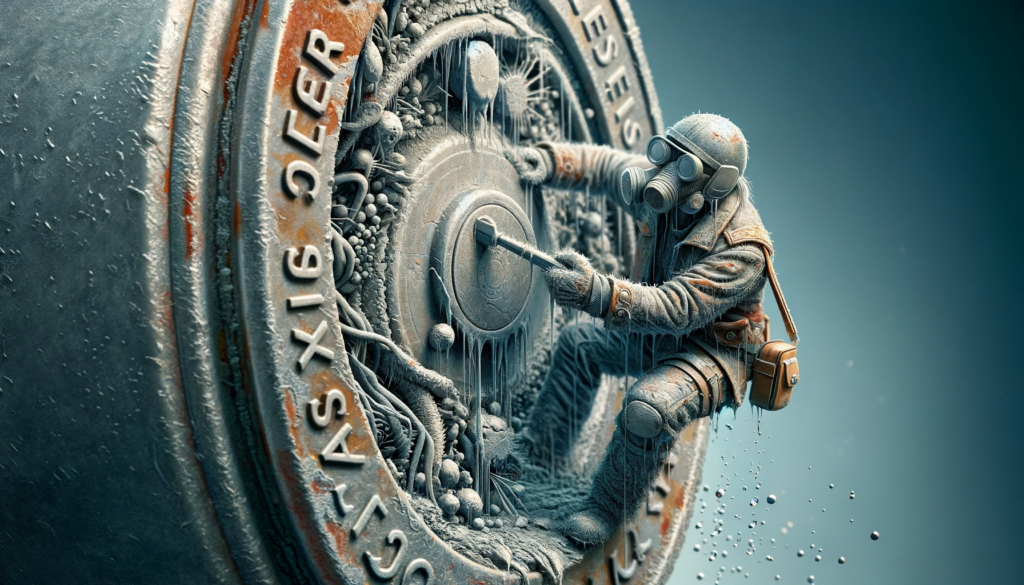
The main concern when using Bar Keepers Friend is that it can damage some surfaces if used improperly over time.
The oxalic acid reacts with certain materials, especially natural stone products like marble and granite.
Some metals like aluminum and copper may also be damaged if exposed to Bar Keepers Friend too frequently.
Bon Ami is known for being extremely gentle and harmless for all kinds of materials and finishes.
Its soap-based formula with soft feldspar scrubbers cannot harm most tiles, stainless steel, porcelain, fiberglass sinks and tubs.
Bon Ami may be safely used on a daily basis to clean these kitchen and bathroom surfaces.
It will not etch or corrode surfaces even with repeated use.
Thus, Bon Ami is generally the better choice for fine materials like glazed tile, natural stone, glass, andComposite resin surfaces that you do not want to corrode or become cloudy.
Bar Keepers Friend may damage the glossy shine or finish on pristine surfaces despite its excellent cleaning power.
However, Bar Keepers Friend remains a good occasional cleaner for more durable surfaces like stainless steel, porcelain, enameled metal, and ceramic.
Other Usage Differences
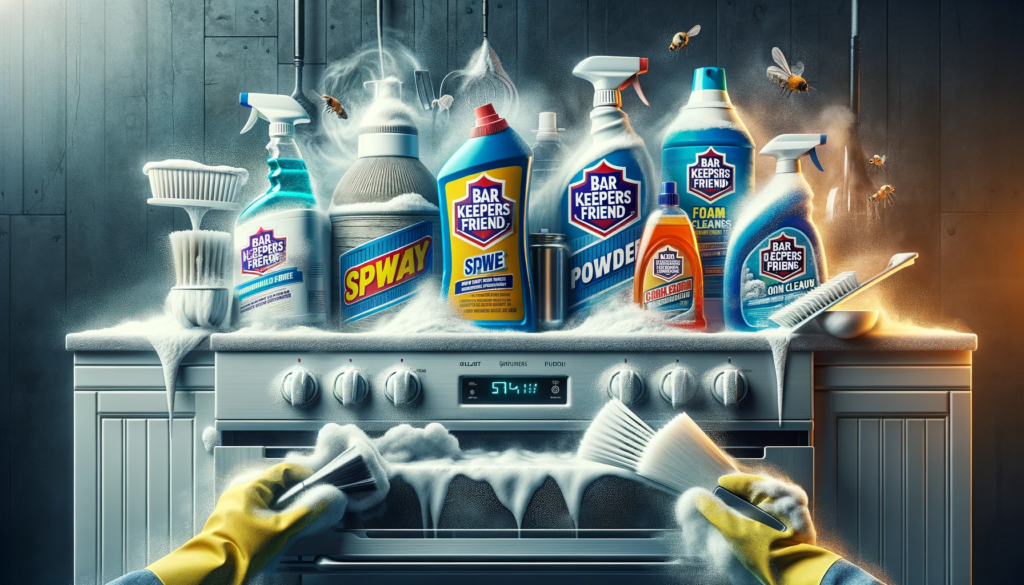
Bar Keepers Friend makes an outstanding grout cleaner because the oxalic acid can help whiten and brighten grout darkened by dirt, grime, and molds.
Bon Ami does not have the same effect because it cannot dissolve away stains in the same manner.
So for restoring dingy, moldy grout around kitchen and bathroom tiles, Bar Keepers Friend provides more dramatic revitalizing effects.
On the other hand, Bon Ami has an advantage when it comes to cleaning cookware and items that touch food.
Because Bon Ami contains no harsh acids or chemicals, it is generally recognized as safe for hand washing pots, pans, utensils, cups, and plates.
The formula will not leave any problematic residues or odors behind on these cooking items or food surfaces.
The form factor of Bon Ami versus Bar Keepers Friend also leads to differences in usage scenarios.
For example, Bon Ami is sold as a powder in a shaker canister for easy dusting and scrubbing onto sinks and countertops.
Bar Keepers Friend offers powder, sprays, and foaming cleanser formulations for heavy duty cleaning needs and situations where more precision application or dwell time is desired before scrubbing.
Cost and Availability
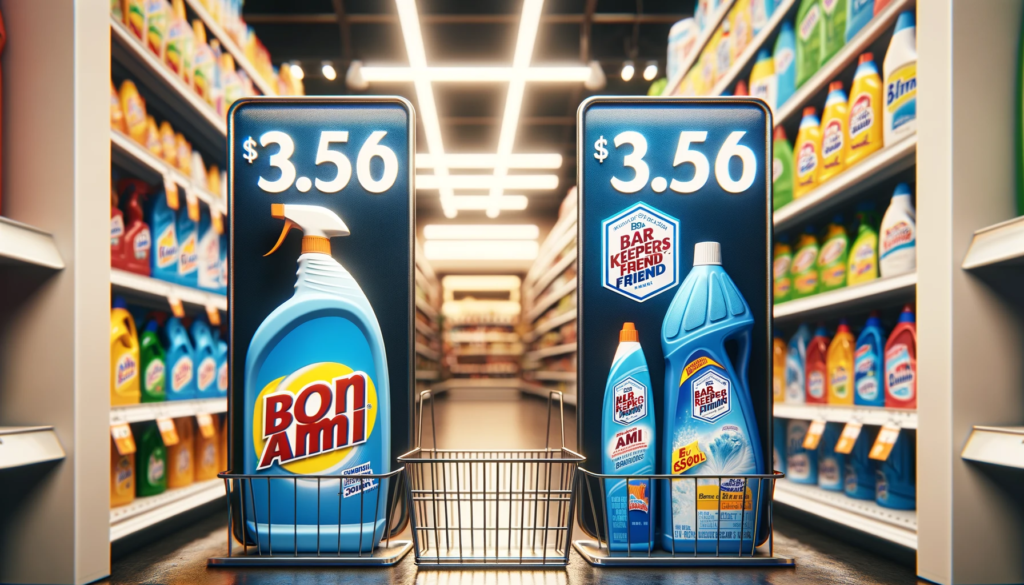
In terms of cost, Bon Ami and Bar Keepers Friend are typically available for affordable prices at grocery stores and big box retailers.
Bon Ami powder tends to cost slightly less on a per ounce basis compared to Bar Keepers Friend powder.
However, Bar Keepers Friend is also sold in larger containers with more product for one-time deep cleaning purposes, which helps lower the cost per use.
Both cleansers are very commonly stocked in the United States and Canada.
Bar Keepers Friend in particular enjoys widespread distribution around the globe in Europe, Asia, Australia, the Middle East, and Latin America.
So while availability favors Bar Keepers Friend outside North America, consumers across most regions can find both Bon Ami and Bar Keepers Friend locally.
Online purchasing is also globalized, opening up international shipping options.
Conclusion
In conclusion, while Bar Keepers Friend boasts oxalic acid for superior cleaning power, Bon Ami’s gentle formula safely and effectively cleans a variety of surfaces without risk of damage over time.
Consider each cleanser’s capabilities to decide whether the scrubbing strength of Bar Keepers Friend or the versatility of Bon Ami best suits your needs.
